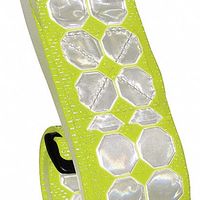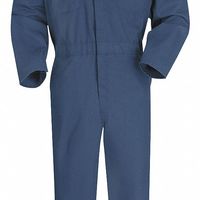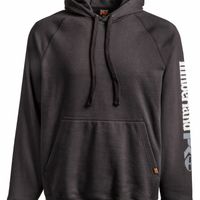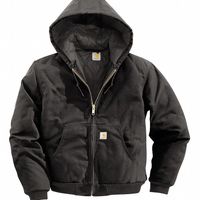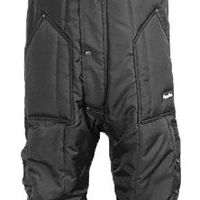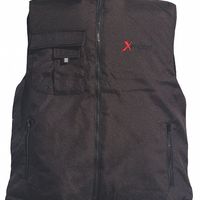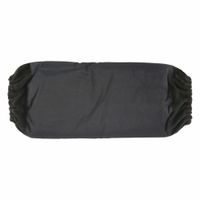Call +(254) 703 030 000 / 751 483 999 / 721 704 777
.....Read More
Frequently Asked Questions
What are the best materials for general purpose workwear?
The best materials for general-purpose workwear are those that offer a balance of durability, comfort, and functionality. Cotton is a popular choice due to its breathability and comfort, making it ideal for environments where temperature regulation is important. It is often blended with synthetic fibers to enhance durability and wrinkle resistance.
Polyester is another common material, known for its strength, wrinkle resistance, and quick-drying properties. It is often used in combination with cotton to create poly-cotton blends, which offer the comfort of cotton with the durability and easy-care properties of polyester.
Denim, made from cotton, is a robust fabric that provides excellent durability and protection, making it suitable for heavy-duty work environments. It is often used in industries like construction and manufacturing.
Canvas, a heavy-duty woven fabric, is also favored for its toughness and resistance to wear and tear. It is often used in workwear like overalls and jackets, providing protection against abrasions and harsh conditions.
For environments requiring additional protection, materials like Cordura and Kevlar are used. Cordura is known for its high resistance to abrasions, tears, and scuffs, while Kevlar offers exceptional cut and heat resistance, making it suitable for protective gear.
Finally, for workwear requiring water resistance, materials like Gore-Tex are used. Gore-Tex is a breathable, waterproof fabric that keeps workers dry in wet conditions while allowing moisture to escape, maintaining comfort.
In summary, the best materials for general-purpose workwear are those that combine comfort, durability, and specific protective features, tailored to the demands of the work environment.
How do I choose the right size for workwear?
To choose the right size for workwear, start by taking accurate body measurements. Use a flexible tape measure to record your chest, waist, hips, inseam, and sleeve length. For tops, measure the fullest part of your chest and the narrowest part of your waist. For bottoms, measure your waist at the natural crease and your hips at the widest point. The inseam is measured from the crotch to the bottom of the leg, and sleeve length is from the shoulder to the wrist.
Next, consult the sizing chart provided by the workwear brand. Sizes can vary significantly between brands, so always refer to their specific chart. Compare your measurements to the chart to determine your size. If you fall between sizes, consider the fit you prefer—looser for more movement or tighter for a more tailored look.
Consider the type of workwear and its purpose. For example, if you need room for layering in colder environments, you might opt for a slightly larger size. For safety gear, ensure it fits snugly to avoid hazards.
Check the fabric composition. Materials like cotton may shrink after washing, so account for potential shrinkage when choosing your size. Conversely, synthetic materials may have more stretch and retain their shape better.
Read customer reviews for insights on fit and comfort. Reviews often mention if an item runs large or small, which can guide your decision.
Finally, if possible, try on the workwear before purchasing. Move around to ensure comfort and functionality. If buying online, check the return policy in case the fit isn’t right. Prioritize comfort, safety, and the specific requirements of your work environment when selecting the size.
What features should I look for in functional workwear?
When selecting functional workwear, prioritize the following features:
1. **Durability**: Choose materials like ripstop, canvas, or reinforced fabrics that withstand wear and tear. Double-stitched seams and reinforced knees or elbows enhance longevity.
2. **Comfort**: Look for breathable, moisture-wicking fabrics to keep you cool and dry. Stretchable materials or ergonomic designs allow for better movement and flexibility.
3. **Fit**: Ensure a proper fit that allows for layering and movement without being too tight or loose. Adjustable features like waistbands, cuffs, and hems can provide a customized fit.
4. **Weather Resistance**: For outdoor work, select water-resistant or waterproof materials. Windproof and insulated options are ideal for cold environments.
5. **Safety Features**: High-visibility colors or reflective strips are crucial for visibility. Flame-resistant materials are necessary for high-risk environments. Consider workwear with built-in knee pads or protective gear.
6. **Pockets and Storage**: Multiple pockets, including secure zippered or Velcro options, are essential for carrying tools and personal items. Tool loops and D-rings add convenience.
7. **Ease of Maintenance**: Opt for machine-washable fabrics that resist stains and wrinkles, reducing maintenance time and effort.
8. **Versatility**: Choose workwear that can transition between different tasks or environments, offering both functionality and a professional appearance.
9. **Brand Reputation**: Consider brands known for quality and reliability in workwear, ensuring you invest in trusted products.
10. **Cost-Effectiveness**: Balance quality with budget, considering long-term durability and functionality over initial cost.
By focusing on these features, you can select workwear that enhances performance, safety, and comfort in your specific work environment.
How do I care for and maintain workwear?
To care for and maintain workwear, follow these steps:
1. **Read Labels**: Always check the care labels for specific washing and drying instructions.
2. **Pre-Treat Stains**: Address stains immediately using a stain remover or a mixture of water and detergent. Gently rub the solution into the stain before washing.
3. **Wash Regularly**: Clean workwear frequently to prevent dirt and grime buildup. Use a mild detergent and avoid fabric softeners, which can reduce the fabric's durability.
4. **Separate by Color and Fabric**: Wash similar colors and fabrics together to prevent bleeding and damage. Use cold water for dark colors to maintain vibrancy.
5. **Use Appropriate Settings**: Select the right washing machine settings based on the fabric type. Use a gentle cycle for delicate materials and a regular cycle for sturdier fabrics.
6. **Avoid Overloading**: Do not overload the washing machine to ensure thorough cleaning and prevent excessive wear.
7. **Dry Properly**: Air-dry workwear when possible to prevent shrinkage and fabric damage. If using a dryer, select a low heat setting.
8. **Iron with Care**: If ironing is necessary, use the appropriate heat setting for the fabric. Avoid ironing over logos or reflective strips.
9. **Repair Promptly**: Fix any tears, loose threads, or missing buttons immediately to extend the life of the garment.
10. **Store Correctly**: Hang workwear to prevent wrinkles and maintain shape. Use padded hangers for heavy items to avoid stretching.
11. **Rotate Garments**: Have multiple sets of workwear to rotate usage, reducing wear and tear on individual pieces.
12. **Inspect Regularly**: Check for signs of wear and tear, and replace items that are beyond repair to ensure safety and professionalism.
Are there specific brands known for durable workwear?
Yes, several brands are renowned for producing durable workwear, known for their quality materials and construction. Carhartt is a leading name, famous for its rugged jackets, overalls, and pants made from heavy-duty duck canvas and reinforced stitching. Dickies is another well-respected brand, offering a wide range of workwear, including pants and coveralls, known for their durability and comfort.
Red Kap specializes in industrial workwear, providing uniforms and work shirts that withstand harsh conditions. Duluth Trading Co. is known for its innovative designs and durable materials, offering work pants and shirts with features like reinforced knees and extra pockets.
Timberland PRO focuses on work boots and apparel, combining durability with comfort and safety features. Wrangler Riggs Workwear offers tough jeans and shirts designed for demanding work environments, with reinforced stress points and comfortable fits.
Helly Hansen Workwear is popular in industries requiring waterproof and insulated clothing, providing high-quality jackets and pants. Caterpillar (CAT) Apparel extends its reputation for heavy machinery to durable workwear, offering robust clothing and footwear.
Blaklader, a Swedish brand, is known for its high-quality work pants and jackets, featuring multiple pockets and reinforced areas. Lastly, Ariat specializes in work boots and apparel, particularly for outdoor and equestrian work, combining durability with advanced technology for comfort and protection.
These brands are trusted by professionals across various industries for their commitment to quality and durability, ensuring that their workwear can withstand the rigors of demanding work environments.
How does workwear differ for various work environments?
Workwear varies significantly across different work environments due to factors such as safety requirements, functionality, comfort, and company culture.
In industrial settings like construction or manufacturing, workwear often includes durable materials like denim or canvas to withstand wear and tear. Safety is paramount, so items like steel-toed boots, hard hats, and high-visibility vests are common. Flame-resistant clothing may be required in environments with fire hazards.
In corporate or office settings, workwear tends to be more formal, with suits, dress shirts, and ties for men, and dresses, skirts, or tailored pantsuits for women. The focus is on professionalism and adherence to company dress codes, which may vary from business formal to business casual.
Healthcare professionals, such as doctors and nurses, typically wear scrubs, which are designed for comfort and ease of movement. These garments are often made from materials that are easy to clean and sanitize, crucial in maintaining hygiene standards.
In the hospitality industry, uniforms are often used to create a cohesive brand image. Chefs wear white jackets and hats for cleanliness and tradition, while hotel staff might wear tailored uniforms that reflect the establishment's style and level of formality.
For outdoor or field work, such as in agriculture or environmental research, workwear is designed for protection against the elements. This might include waterproof jackets, sturdy boots, and hats for sun protection.
In creative industries, such as fashion or tech startups, dress codes are often more relaxed, allowing for personal expression while maintaining a level of professionalism.
Overall, workwear is tailored to meet the specific needs of the job, balancing safety, functionality, and the cultural expectations of the workplace.
What is the average cost of quality workwear?
The average cost of quality workwear can vary significantly based on factors such as brand, material, durability, and specific industry requirements. Generally, for basic quality workwear, such as shirts and pants, prices can range from $20 to $100 per item. Mid-range options, which offer better durability and comfort, typically cost between $50 and $150 per piece. High-end workwear, often used in specialized industries like construction or oil and gas, can range from $100 to $300 or more per item, especially if it includes features like flame resistance or high visibility.
Footwear is another essential component of workwear, with prices for quality work boots ranging from $80 to $250, depending on the level of protection and comfort required. Outerwear, such as jackets and coats designed for harsh weather conditions, can cost between $100 and $300.
For industries requiring specific safety features, such as flame-resistant clothing or high-visibility gear, costs can be higher. Flame-resistant shirts and pants can start at around $50 and go up to $200 or more, while high-visibility jackets and vests can range from $30 to $150.
Overall, the average cost of assembling a complete set of quality workwear, including shirts, pants, outerwear, and footwear, can range from $200 to $800 or more, depending on the specific needs and standards of the industry.

